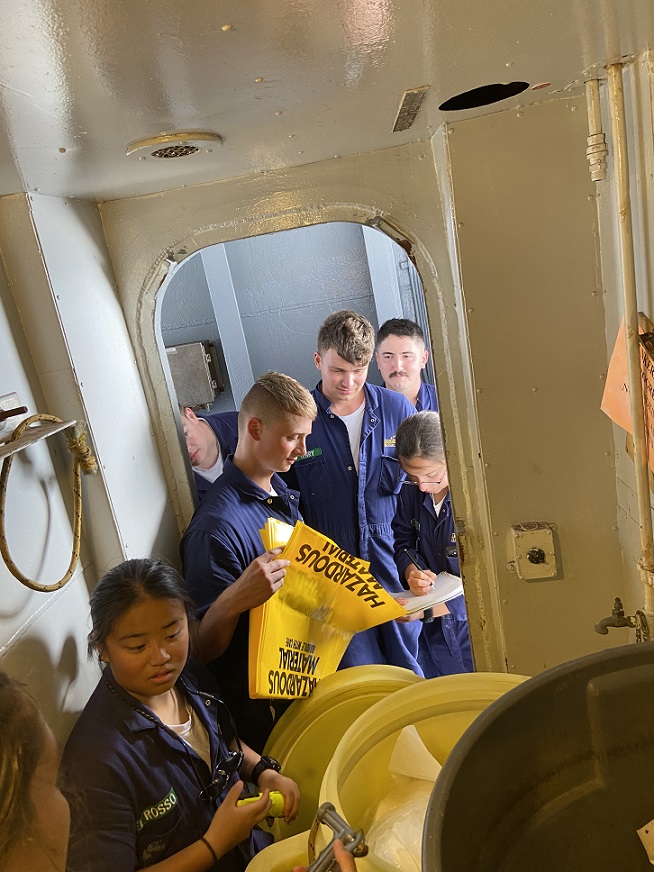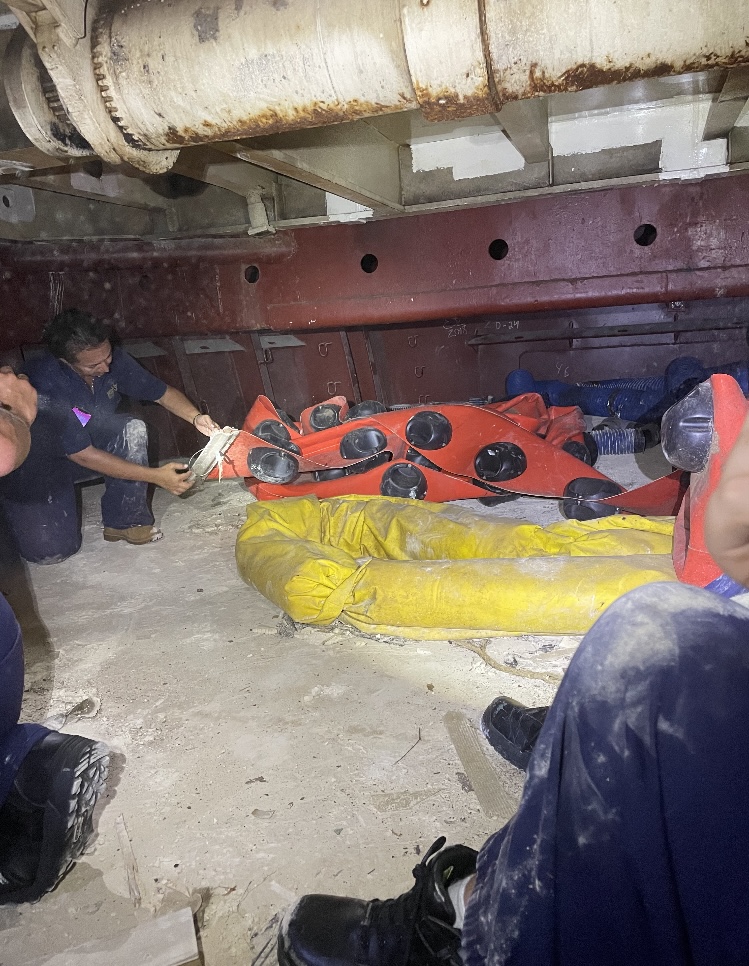
Last week, cadets majoring in Marine Safety, Science, & Environmental Protection (MSSEP) visited one of the most important places aboard the TS Kennedy.
Before they headed out, MSSEP Professor Jen Stone had an experiment for the cadets. She wanted them to envision an oil spill. Instead of actual oil, Professor Stone provided a mixture of canola oil and brownie batter. The coffee stirrers represented oil booms. The students used Dawn dish washing liquid to see how a dispersant work.
Next, Professor Stone took them to see the Ship Oil Pollution Emergency Plan (SOPEP) Locker. This small space contains items that could limit the impact of an oil spill aboard the TS Kennedy.
MARPOL is short for Marine Pollution. In 1973, representatives from around the world met to discuss ways to protect our oceans and the marine creatures that live in them. The meeting was called the International Convention For The Prevention of Pollution from Ships. The group worked together to create a plan that would prevent pollution of the marine environment by ships, either from operational or accidental causes.
One of the decisions made was that any ship with 400 GT (gross tonnage) and above must carry an oil prevention plan. Part of the plan identifies materials that ships must have on hand in a designated locker in case an oil spill occurs. Professor Stone and the cadets headed to the TS Kennedy's SOPEP Locker to take inventory.


Inside, they found:
A. oil absorbent pads: pads absorb oil-based liquids, but not water

B. ENSORB: a safe and environmentally friendly powdery substance, absorbs and hold all liquids, leaves little or no residue

C. containers of kitty litter and sawdust: mixture acts in the same way as ENSORB
C. oil spill bags: 1,000-litre bag to hold oil, sealable top, able to hold oil until the ship returns to the dock

D. brooms
E. brushes
F. rags
G. shovels
H. rubber suits, boots, gloves
After checking out the locker, there was one more item to find, booms. Booms are temporary floating barriers designed to contain marine oil spills. Part of the boom extends above the surface, the rest sinks into the ocean. The booms protect the environment and make the cleanup faster and easier.
The booms are too large to fit inside the locker so they are stored deep down in 1-hold, a storage area. Do you see the surface that the cadets are standing on? It almost looks like beach sand, doesn’t it? No, it is poured cement. When the ship was converted from a cargo ship to a training ship, the cement was added as permanent ballast. Ballast keeps the ship floating upright and in a safe, stable condition.
The cadets examined the booms and listed as Professor Stone described how they would be deployed in an emergency.



Not only was this fieldtrip to the Ship Oil Pollution Emergency Plan (SOPEP) Locker and to 1-hold a first for the cadets, it is a first for the Follow The Voyage-Share The Experience Program. You are the first students to be introduced to these two important areas of the TS Kennedy.